Types of Inflorescence - Racemose Inflorescence | 11th Botany : Chapter 4 : Reproductive Morphology of Angiosperm
Chapter: 11th Botany : Chapter 4 : Reproductive Morphology of Angiosperm
Racemose Inflorescence
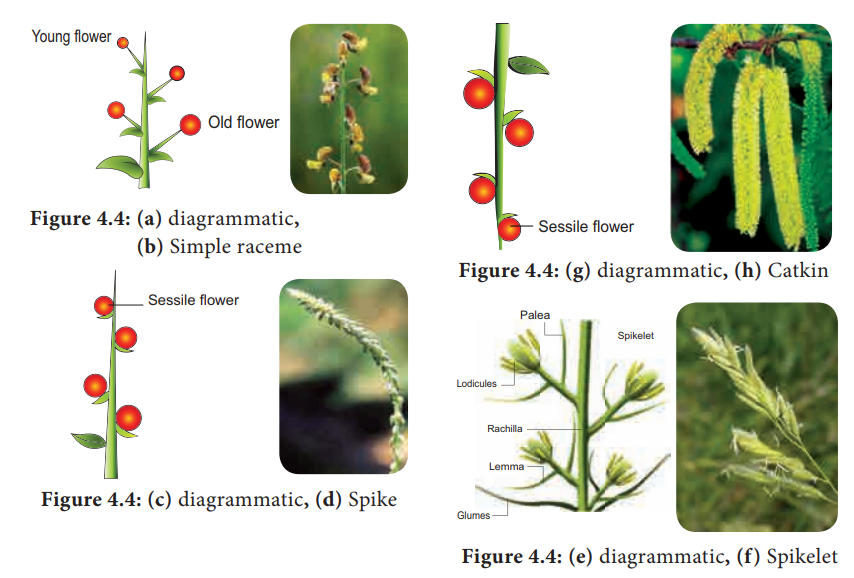
Inflorescences may also have classified based on
branching, number and arrangement of flowers, and some specialized structures.
I.
Indeterminate
(racemose)
II. Determinate (cymose)
III.
Mixed
inflorescence: Inflorescence
of some plants show a combination of indeterminate and determinate pattern
IV.
Special
inflorescence: Inflorescence
which do not confined to these patterns
Racemose
![]()
![]()
![]()
The central axis of the inflorescence (peduncle)
possesses terminal bud which is capable of growing continuously and produce
lateral flowers is called racemose inflorescence. Old flowers are at the
base and younger flowers and buds
are towards the apex. It is further divided into 3 types based on growth
pattern of main axis.
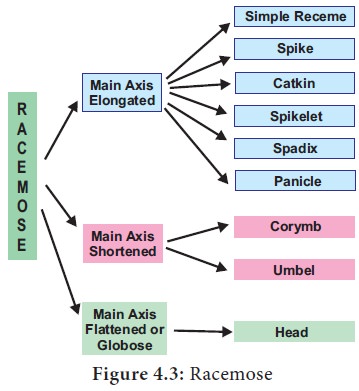
1. Main axis elongated
The axis of inflorescence is elongated and contains
pedicellate or sessile flowers on it. The following types are discussed under
main axis elongated type.
a.
Simple
raceme: The inflorescence with an
unbranched main axis bears pedicellate
flowers in acropetal succession.
Example: Crotalaria retusa, mustard
and radish.
b.
Spike: Spike is
an unbranched indeterminate inflorescence with sessile flowers. Example: Achyranthes, Stachytarpheta.
c.
Spikelet:
Literally
it is a small spike. The
Inflorescence is with
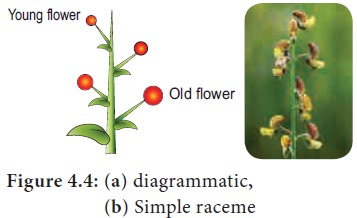
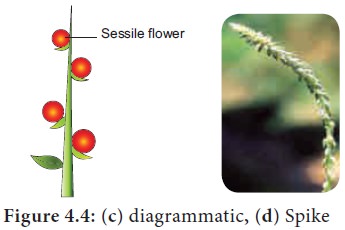
Each branch is a spikelet. Sessile flowers are formed in acropetal succession on the axis. A
pair of inflorescence bracts called glumes
is present at the base. Each sessile flower has a lemma (bract) and a palea
(bracteole). Tepals reduced to colourless scaly leaves (lodicule). Each flower
has stamen and pistil only. Example: Paddy, Wheat, Barley, Sorghum.
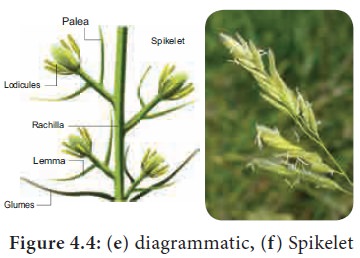
d. Catkin: Pendulous spikes with a long and drooping axis bearing small
unisexual or bisexual flowers. It is also
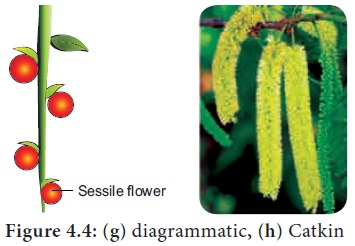
called ament.
Example: Acalypha hispida, Prosopis juliflora, Piper nigrum.
e.
Spadix: An inflorescence with a
fleshy or thickened central axis that possesses many unisexual sessile flowers
in acropetal succession. Usually female flowers are found towards the base and
male flowers are found at the apex. Entire
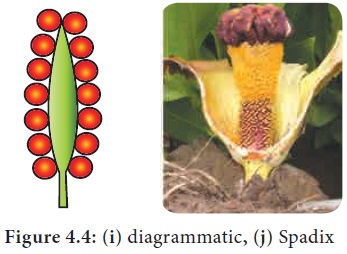
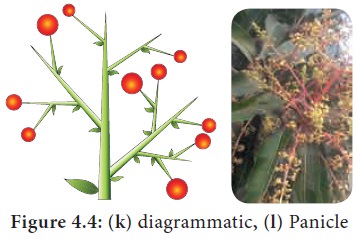
f.
Panicle: A
branched raceme is called panicle.
Example: Mangifera, neem, Delonix
regia. It is also called Compound raceme or raceme of racemes.
2. Main axis shortened:
Inflorescence with reduced growth of central axis.
There are two types namely corymb and umbel.
a.
Corymb: An inflorescence with shorter
pedicellate flowers at the top and longer pedicellate flowers at the bottom.
All flowers appear at the same level to form convex or flat topped racemose
inflorescence. Example: Caesalpinia. Compound corymb: A branched corymb is called compound corymb. Example: Cauliflower.
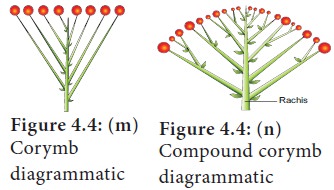
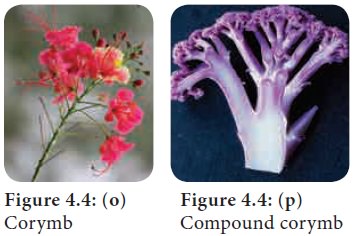
b. Umbel:
An
inflorescence with indeterminate
central axis and pedicellate flowers arise from a common point of peduncle at
the apex. Example: Allium cepa, Centella asiatica, Memecylon umbellatum. Compound umbel: It is a branched umbel. Each smaller unit is called umbellule. Example: Daucas carota, Coriandrum sativum, Memecylon
edule.
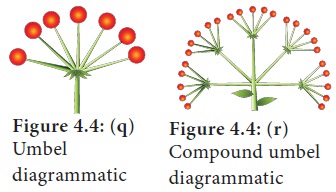
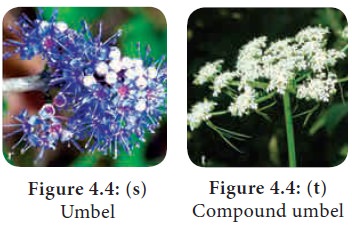
3. Main axis flattened:
The main axis of inflorescence is mostly flattened
(convex or concave) or globose. A head
or capitulum is a determinate or
indeterminate, group of sessile or sub sessile flowers arising on a receptacle,
often subtended by an involucre.
a. Head: A head is
a characteristic inflorescence of
Asteraceae and is also found in some members of Rubiaceae.
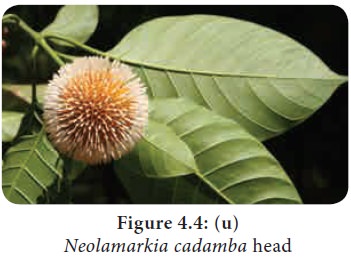
Example: Neolamarkia cadamba, Mitragyna parvifolia and in some members of Fabaceae-Mimosoideae. Example:
Acacia nilotica, Albizia lebbeck, Mimosa pudica (sensitive plant).
Torus contains two types of florets: 1. Disc floret
or tubular floret. 2. Ray floret or ligulate floret.
The flower and inflorescence are
subtended by a lateral appendage called bract. In sunflower, you may notice
that the whorl of bracts forms a cup like structure beneath mimicking the
calyx. Such whorl of bracts is called involucre. A group of bracts present
beneath the sub unit of inflorescence is known as Involucel.
Heads are classified into two types.
i. Homogamous
head: This
type of inflorescence exhibits
single kind of florets. Inflorescence has disc florets alone. Example: Vernonia, Ageratum or Ray florets alone.
Example: Launaea, Sonchus.
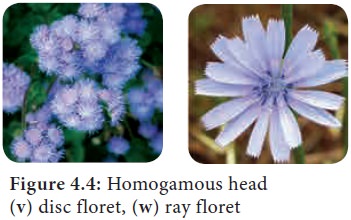
ii. Heterogamous
head: The inflorescence possesses both types of
florets. Example: Helianthus, Tridax.
Disc
florets at the centre of the head are
tubular and bisexual whereas the ray
florets found at the margin of the
head which are ligulate pistilate
(unisexual).
Related Topics